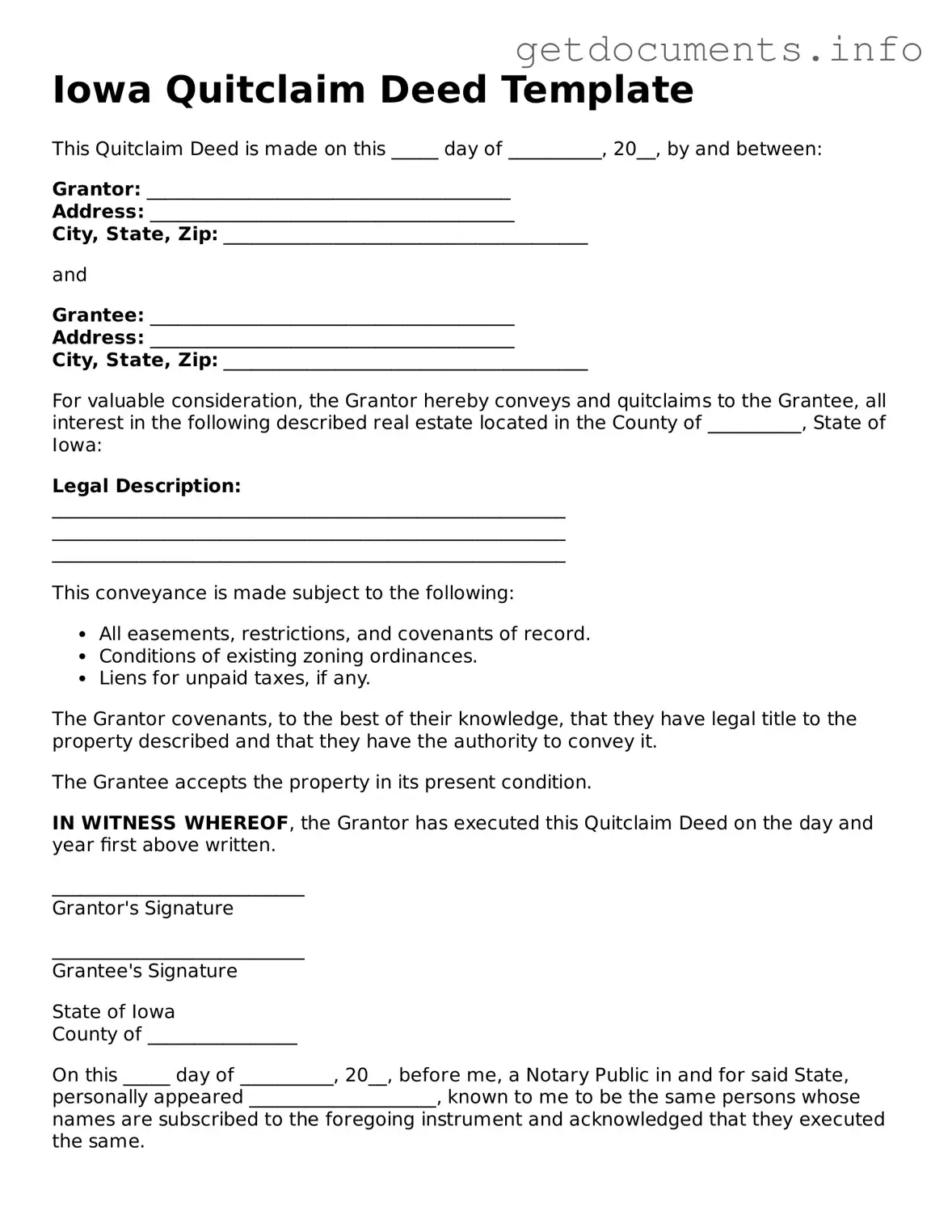Free Quitclaim Deed Template for Iowa
A Quitclaim Deed is a legal document used to transfer ownership of real estate from one party to another without any warranties regarding the title. This form is particularly useful in situations where the parties know each other, such as family transfers or divorces. Understanding how to properly fill out this form is essential for ensuring a smooth transfer of property rights.
To start the process, fill out the form by clicking the button below.
Access Quitclaim Deed Editor
